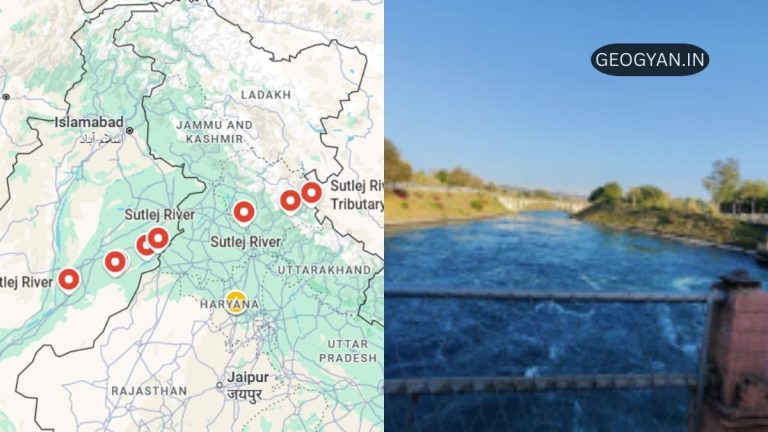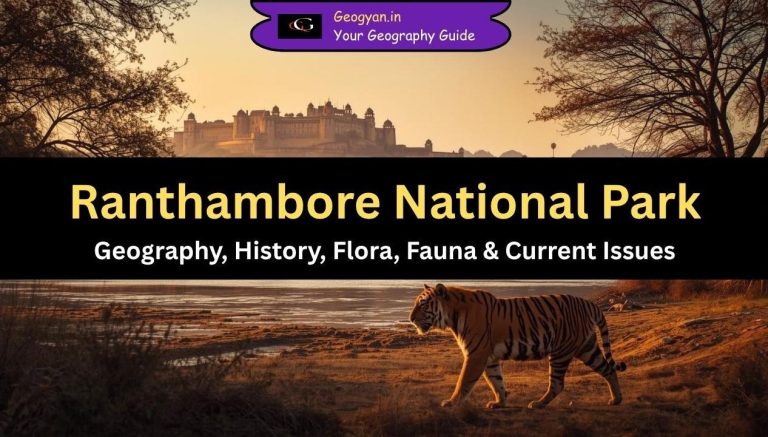Millions of years of geological transformations combined with continuous water erosion from the Colorado River created the majestic natural masterpiece which is the Grand Canyon. The Arizona location houses this natural wonder which welcomes millions of annual travelers because it provides visitors the chance to admire amazing vistas while experiencing different weather patterns and attempting the well-known Grand Canyon Skywalk. This detailed introduction covers all crucial information about this unprecedented location.
Location and Accessibility in Grand Canyon National Park
Northern Arizona maintains the Grand Canyon as its central feature among natural attractions in the Southwest region of America. This extensive Colorado River basin contains the massive canyon system that stands among the top natural attractions drawn by tourists in the United States. The laser-strategic positioning near Las Vegas and other substantial cities drives excessive tourist flow from both United States and worldwide populations.
Visitors have multiple transportation choices because of this geographic position near Las Vegas. Visitors can select between driving through the desert scenery or taking a short flight that makes the entire experience an integral part of the adventure. The Las Vegas road trip lets people observe the city’s urban development fade into untamed wildlands and provides helicopter tours that reveal the monumental dimensions of the canyon from above.
A visitor planning their trip should be aware that the Grand Canyon features separate rim locations which provide exclusive exploration options.
Visitors can access the South Rim categories year-round through this entrance which contains a variety of amenities available for tourists. Tourists starting their first visit and families find this area especially suitable because it presents many observation points and hiking paths along with educational programs.
At the North Rim of the Grand Canyon visitors find isolation because it operates with limited accessibility during wintertime at its elevated position. Vacationers going to this section find a natural setting where they can enjoy peaceful encounters with nature.
Grayline Tours controls the visitor experience at the West Rim that contains the Skywalk attraction while also preserving tribal cultural heritage.
Weather: A Tale of Extremes
One of the most fascinating aspects of the Grand Canyon is its remarkably diverse weather patterns, which vary dramatically depending on elevation and season. The canyon’s depth range of 2,000 to 8,000 feet creates distinct climate zones, each with its own characteristic conditions.
Seasonal Variations in Grand Canyon National Park
The canyon’s weather presents a study in contrasts, with conditions that can vary significantly between the rim and the canyon floor:
Summer (June to August):
- Rim temperatures typically remain mild and pleasant
- Canyon bottom temperatures can soar above 100°F (37.8°C)
- Afternoon thunderstorms are common, especially during the monsoon season
- Humidity levels remain relatively low, particularly at higher elevations
Winter (December to February):
- Rim areas experience cold temperatures and occasional snowfall
- The canyon floor maintains milder conditions
- Snow accumulation can affect accessibility to certain viewpoints
- Clear, crisp days offer exceptional visibility across the canyon
Spring (March to May) and Fall (September to November):
- These transitional seasons offer the most stable and pleasant weather
- Temperature variations between day and night are less extreme
- Precipitation is generally minimal
- Ideal conditions for hiking and outdoor activities
Microclimate Phenomenon
The Grand Canyon’s unique topography creates numerous microclimates, resulting in distinct environmental conditions at different elevations. This phenomenon affects both flora and fauna, contributing to the canyon’s remarkable biodiversity. Visitors hiking from rim to river can experience temperature changes equivalent to traveling from Canada to Mexico.
The Grand Canyon Skywalk: Walking on Air in Grand Canyon National Park
Perhaps no modern addition to the Grand Canyon has generated more excitement than the Grand Canyon Skywalk. This engineering marvel, located at Eagle Point on the Hualapai Reservation, has transformed the way visitors experience the canyon’s majesty.
Engineering Marvel
The Skywalk’s construction specifications are as impressive as the views it offers:
- Extends 70 feet beyond the canyon’s edge
- Features a horseshoe-shaped glass bridge
- Built to withstand extreme weather conditions and natural disasters
- Demonstrates remarkable structural integrity, capable of supporting the weight equivalent to 71 fully loaded Boeing 747 aircraft
- Incorporates sophisticated dampening systems to minimize vibration
Visitor Experience
The Skywalk provides an unparalleled viewing experience:
- Crystal-clear glass floors offer vertigo-inducing views of the canyon below
- Panoramic vistas encompass the canyon, Lake Mead, and Hoover Dam
- Professional photographers capture memorable moments (personal cameras are not permitted on the Skywalk)
- Cultural interpreters share insights about the Hualapai people’s connection to the land
Safety and Design
The Skywalk’s design prioritizes visitor safety while maximizing the viewing experience:
- Multiple layers of strengthened glass ensure structural integrity
- Regular maintenance and inspection protocols maintain safety standards
- Wind resistance design allows operation in most weather conditions
- Climate control features prevent condensation on viewing surfaces
Conservation and Environmental Impact
The Grand Canyon represents more than just a tourist destination; it serves as a vital ecosystem and geological record of Earth’s history. The National Park Service, along with tribal authorities, works diligently to balance visitor access with environmental preservation.
Ecological Significance
The canyon’s varied elevations and climate zones support diverse ecosystems:
- Over 1,500 plant species
- 355 bird species
- 89 mammal species
- 47 reptile species
- Multiple endangered species
Preservation Efforts
Ongoing conservation initiatives focus on:
- Protecting endangered species
- Managing visitor impact
- Preserving archaeological sites
- Maintaining water quality in the Colorado River
- Supporting scientific research
Planning Your Visit
Making the most of your Grand Canyon experience requires careful planning, considering the following factors:
Best Time to Visit
The ideal timing depends on your priorities:
- Spring and fall offer moderate temperatures and smaller crowds
- Summer provides longest daylight hours but requires heat management
- Winter delivers unique snow-draped vistas but limited access to some areas
Essential Preparations
Visitors should consider:
- Appropriate clothing for variable weather conditions
- Sun protection and adequate water supply
- Comfortable walking shoes
- Camera equipment
- Park maps and guides
Activities and Attractions
Beyond the Skywalk, visitors can enjoy:
- Hiking trails for all skill levels
- Mule rides into the canyon
- River rafting adventures
- Helicopter tours
- Ranger-led programs
- Sunrise and sunset viewing
- Cultural demonstrations
Cultural Significance
The Grand Canyon holds profound cultural importance for numerous Native American tribes, particularly the Hualapai, Havasupai, and Navajo peoples. Their ancestral connections to this land span thousands of years, and their stories and traditions add rich cultural dimensions to the canyon’s natural grandeur.
Indigenous Perspectives
Native American communities continue to maintain strong spiritual and cultural ties to the canyon:
- Sacred sites within the canyon
- Traditional gathering places
- Ancient dwelling sites
- Cultural ceremonies and practices
- Oral histories and legends
Modern Cultural Impact
The Grand Canyon’s influence extends beyond its physical presence:
- Inspiration for artists and photographers
- Setting for scientific discovery
- Symbol of natural conservation
- Educational resource
- Economic driver for local communities
Conclusion
The Grand Canyon stands as a testament to both nature’s power and humanity’s ability to appreciate and preserve natural wonders. Its diverse weather patterns, accessibility from major cities, and modern attractions like the Skywalk make it a destination that offers something for everyone. Whether seeking adventure, cultural understanding, scientific knowledge, or simply a moment of awe before nature’s grandeur, visitors to the Grand Canyon find themselves transformed by the experience.
As we continue to protect and preserve this natural wonder, the Grand Canyon remains not just a destination but a reminder of our responsibility to maintain the delicate balance between human enjoyment and environmental conservation. Its weather patterns, geological features, and cultural significance combine to create an experience that continues to captivate millions of visitors each year, making it one of the world’s most remarkable natural treasures.
Whether you’re planning your first visit or returning to explore new aspects of this magnificent landscape, the Grand Canyon promises an experience that will leave an indelible impression on your memory. From the engineering marvel of the Skywalk to the pristine wilderness of the North Rim, each visit offers new perspectives on this eternal monument to nature’s artistry.





























